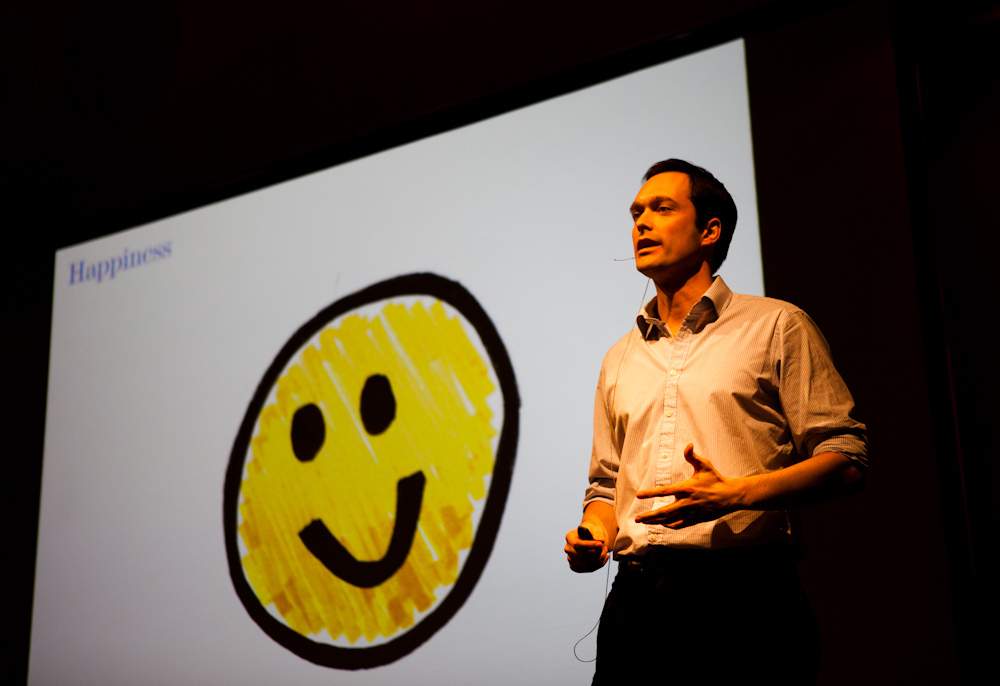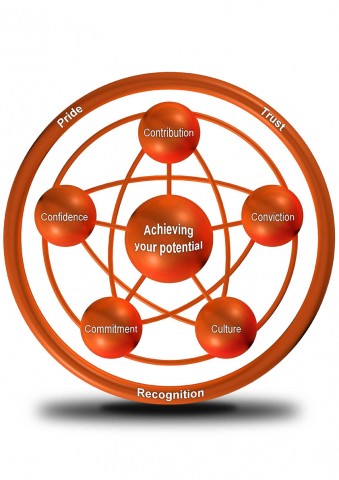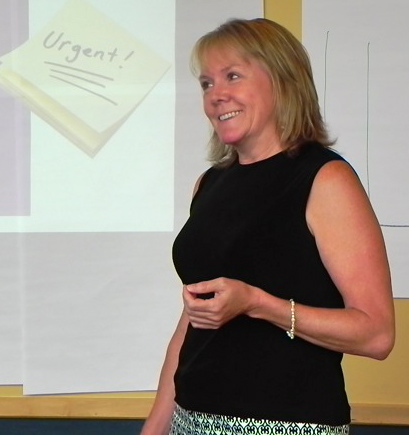
I was interested to hear that a new study is the first to identify a “happiness gene.” This meshes nicely with Sonja Lyubomirsky’s work, which says 50 percent of our happiness is genetically programmed, 40 percent is our choice and the other 10 percent is unknown.
Here’s the press release from the London School of Economics and Political Science:
People tend to be happier if they possess a more efficient version of a gene which regulates the transport of serotonin in the brain, a new study has shown.
The findings, published today in the Journal of Human Genetics, are the first to show a direct link between a specific genetic condition and a person’s happiness, as measured by their satisfaction with life.
This research led by behavioural economist Jan-Emmanuel De Neve, of the London School of Economics and Political Science (LSE), examined genetic data from more than 2,500 participants in the National Longitudinal Study of Adolescent Health (a representative population sample in the US). In particular, it looked at which functional variant of the 5-HTT gene they possess.
The 5-HTT gene, which provides the operating code for serotonin transporters in our neuron cell walls, has a variation (or allele) which can be either long or short. The long allele is more efficient, resulting in increased gene expression and thus more serotonin transporters in the cell membrane. Inheriting the gene from both parents, each of us will have a genotype which can be long-long, short-short or a combination of the two alleles.
The study compared the subject’s genetic type with their answer to the question “How satisfied are you with your life as a whole?”—to which they could give one of five possible answers: very satisfied, satisfied, dissatisfied, very dissatisfied or neither.
The results showed that a much higher proportion of those with the efficient (long-long) version of the gene were either very satisfied (35 per cent) or satisfied (34 per cent) with their life—compared to 19 per cent in both categories for those with the less efficient (short-short) form. Conversely, 26 per cent of those with the short-short allele were dissatisfied, compared to only 20 per cent of those with the long-long variant.
The study showed that possessing one long allele increases the likelihood of being very satisfied with life by 8.5 per cent as compared to having no long alleles of the 5-HTT gene. For two long alleles, the average likelihood of being very satisfied with life rose by 17 per cent in the study population.

Jan-Emmanuel De Neve said: “It has long been suspected that this gene plays a role in mental health but this is the first study to show that it is instrumental in shaping our individual happiness levels.”
“The results of our study suggest a strong link between happiness and this functional variation in the 5-HTT gene. Of course, our well-being isn’t determined by this one gene—other genes and especially experience throughout the course of life will continue to explain the majority of variation in individual happiness. But this finding helps to explain why we each have a unique baseline level of happiness and why some people tend to be naturally happier than others, and that’s in no small part due to our individual genetic make-up.”
The paper is entitled ‘Functional polymorphism (5-HTTLPR) in the serotonin transporter gene is associated with subjective well-being: evidence from a US nationally representative sample’ and is available at the Journal of Human Genetics (http://www.nature.com/jhg/journal/vaop/ncurrent/index.html) or from the LSE Press Office or the author.
A related paper prepared by Jan-Emmanuel De Neve and co-authors Nicholas Christakis (Harvard Medical School), James H. Fowler (University of California, San Diego), and Bruno Frey (University of Zurich) further develops this research and looks at the evidence produced from a study of twin pairs. This work shows that genetics explain about one-third of the variation in human happiness. This paper is currently available as a SSRN working paper.
 Check this out—The Wall Street Journal is measuring happiness at work using the same assessment tool I have been using with my clients. This link takes you to the article and gives people the opportunity to use the free (short report) assessment. They will be reporting the results next month.
Check this out—The Wall Street Journal is measuring happiness at work using the same assessment tool I have been using with my clients. This link takes you to the article and gives people the opportunity to use the free (short report) assessment. They will be reporting the results next month.

 In Happiness at Work: Maximizing your Psychological Capital for Success (2010), author Jessica Pryce-Jones takes her research with more than 3,000 respondents from 79 countries and gets to the heart of what drives happiness and (this is so cool!) found that
In Happiness at Work: Maximizing your Psychological Capital for Success (2010), author Jessica Pryce-Jones takes her research with more than 3,000 respondents from 79 countries and gets to the heart of what drives happiness and (this is so cool!) found that  At the center of the Performance-Happiness Model is believing that you are achieving your potential. This is important because that belief makes you happy, and the statistics around happy versus unhappy employees are staggering.
At the center of the Performance-Happiness Model is believing that you are achieving your potential. This is important because that belief makes you happy, and the statistics around happy versus unhappy employees are staggering.
 Capiche is happy to announce that Chris Cook has received full accreditation from the iOpener Institute for People and Performance, based in Oxford, England. Chris is the only iOpener-accredited coach in the Pacific Northwest, and she has access to iOpener tools and solutions that no other coach in the region enjoys.
Capiche is happy to announce that Chris Cook has received full accreditation from the iOpener Institute for People and Performance, based in Oxford, England. Chris is the only iOpener-accredited coach in the Pacific Northwest, and she has access to iOpener tools and solutions that no other coach in the region enjoys.
 Do you stay out of your employees’ way and allow them to problem solve? If not, consider that you are likely the sort of boss who is a top-down, micromanager. The command-and-control model works well in the military but results in tremendous dysfunction for work teams. Hierarchical control often results in a vicious cycle in which the work team is rendered ineffective and unvalued.
Do you stay out of your employees’ way and allow them to problem solve? If not, consider that you are likely the sort of boss who is a top-down, micromanager. The command-and-control model works well in the military but results in tremendous dysfunction for work teams. Hierarchical control often results in a vicious cycle in which the work team is rendered ineffective and unvalued. Take care to not give your followers an acid bath—that’s what Maurer (1994) calls harsh feedback. Consider that the word feedback takes its root in the word “feed.” Feeding allows us to grow, and if we enjoy healthy food, our bodies are nourished. Consider healthy feedback as a tool for positive change, increased self-awareness, and (when delivered appropriately) allows us to grow and be nourished.
Take care to not give your followers an acid bath—that’s what Maurer (1994) calls harsh feedback. Consider that the word feedback takes its root in the word “feed.” Feeding allows us to grow, and if we enjoy healthy food, our bodies are nourished. Consider healthy feedback as a tool for positive change, increased self-awareness, and (when delivered appropriately) allows us to grow and be nourished.
 Work teams pose many challenges and many rewards. What is the secret to a successful team? Salter (2011) interviewed three members of the NBA’s Miami Heat: LeBron James, Dwayne Wade, and Chris Bosh. The purpose of the interviews was to determine the attributes of a dream team, no matter the industry. Among the findings:
Work teams pose many challenges and many rewards. What is the secret to a successful team? Salter (2011) interviewed three members of the NBA’s Miami Heat: LeBron James, Dwayne Wade, and Chris Bosh. The purpose of the interviews was to determine the attributes of a dream team, no matter the industry. Among the findings:




